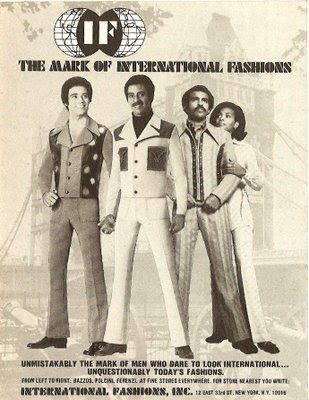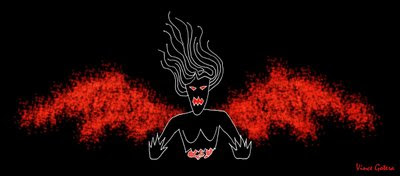Okay, one more of my poems from Asian American Literature, the textbook edited by Shawn Wong, for the benefit of the UGA students with whom I've been interacting (see the last two posts) and now my own students in our Asian American Literature course (at the University of Northern Iowa) who are about to start discussing my poems in that same textbook.
Vietnam Era Vet
A fragrance remembered is Vietnam —
the acrid odor of gunpowder and tracer fire,
smudgy cooking fires in every hooch, the pungent scent
of nước mắm and water buffalo shit, a father's
acid sweat as he searches for his lost son
in some ville, smoking from an H&I strike — all this was my wish.
I'd look at my class A's in their plastic bag in the closet and wish
sometimes I too had been to the 'Nam.
I remembered basic training at Fort Ord, double timing in the sun
to the range. "Ready on the left! Ready on the right! Fire
at will!" Late nights in the latrine, I wrote my father
long letters about being afraid I'd be sent
over there. Everyone in the platoon was afraid of being sent,
but not one of us admitted it. "Sure wish
they'd ship me over to that motherfucker,"
we said to each other in the noonday light, "Vietnam —
can't wait. Shoot me a fucking gook or two, fire
mortars all goddamn night." Papa'd write back, "Son,
let God's will be done. Just be a good son.
Just do your job. If they send you, then they send
you. That's all." And I'd lie on my dark bunk and smoke — the fiery
tip of the cigarette curling like a tracer ricochet — wishing
I loved it all. C-rations, the firing range, the memorized Vietnamese
phrases, my leaky shelter half on bivouac. All for Papa.
That was as close as I would get to my father's
war. I'm sure my grandfather called him a good son,
both in the U.S. Army, the Philippine Scouts. Their Vietnam
had been Bataan. When the sergeant would send
my father out on point, did he wish
even for a moment that he hadn't joined up? Did artillery fire
make him cringe in his foxhole? That time he was caught in crossfire,
did he try to will himself into a tree, a rock, a bird? Papa,
I knew only the mortar's crump and whoosh,
the parabolic path reaching up to California sun.
I never knew the shrapnel's white-hot whistle at arc's end.
Two nights ago, I dreamt I was in Vietnam:
a farmer runs for the tree line — I fire a crisp M-60 burst — Vietcong,
for sure, for sure. The LT sends me up to verify. In shimmering sun,
Charlie's face is the one I wash in my helmet. No. It's your face, Papa.
— Vince Gotera, first appeared in The Journal of American
Culture (1993). Reprinted in Asian American Literature:
A Brief Introduction and Anthology (1996). Appeared
also in Fighting Kite (2007).
Some brief footnotes. In line 6, "H&I" stands for Harrassment and Interdiction: indiscriminate artillery fire at the enemy to break their morale; of course, this procedure caused a great deal of so-called "collateral damage," i.e., injury and death among civilians and noncombatants. Ain't military terminology as fun as a barrel of junkies? In line 7, "class A's" are semi-formal Army uniforms, similar to a suit and tie. A "shelter half" refers to half of a pup tent (line 24); two soldiers would team up to make up a single tent for bivouac or encampment. The Philippine Scouts (line 27) were an elite
Let's focus on craft and technique first. The salient point here is that this poem is a sestina. If you don't know this poetic form, the sestina repeats the ending words of each line in the sestets (six-line stanzas) so that they eventually appear at the end of every possible location (the first line of the sestet, the second line, etc.). Then the repeating words (called repetons [REHP-uh-tawns) appear in a three-line stanza (known as an envoi [own-VWAH]), two words per line, one at the end of the line and the other in the middle.
The repetons are re-used in the stanzas in a preset pattern. The matrix below shows the cycling of this particular sestina's repetons — Vietnam, fire, scent, father, son, and wish. I've color-coded the words so you can follow their movement through the stanzas easily.
Vietnam fire scent father’s son wish | wish 'Nam sun Fire father sent | sent wish motherfucker Vietnam fire son | son send fiery wishing Vietnamese Papa | father’s son Vietnam send wish fire | crossfire Papa whoosh sun arc’s end Vietnam | Envoi sends sun wash Papa |
As you can see, I "cheat" by altering the repetons occasionally (this is pretty common practice among contemporary writers of the sestina). For example, "Vietnam" becomes "'Nam" in stanza 2, "Vietnamese" in stanza 4, and finally "Vietcong" in the envoi. Almost always sestina alterations are done through consonance ("wish" ——> "whoosh" ——> "wash"). I'm pretty proud of how, in stanza 6, the "sent"/"send" sound is rendered by "arc's end" — cool, eh? I'm even more proud (perversely so) of "father" becoming "motherfucker" . . . a kind of literalist double entendre. And there is even a basis here (admittedly distant) in rich consonance: /f/ and /r/ in
Okay, on to content. Many readers misinterpret this poem as being spoken by a grunt in Vietnam, a combat veteran. The central conflict of the poem orbits around the speaker not having gone to Vietnam. In fact the title of the poem is US governmentalese for someone who served in the US armed forces during the war but was not sent to Vietnam. Although this poem uses many autobiographical details from my own life, this speaker is a persona, not me at all. I personally don't feel this way about not having been sent to Vietnam; in real life, my father, even though he was quite the proponent for Army and veteran service, did not want me to fight in that war because he felt the war in Vietnam was wrong.
So why did I write the poem? I had read and was wowed by a story titled "The Persistence of Memory" by Walter Howerton, Jr. (from an anthology called The Perimeter of Light). Howerton's excellent story focused on a Vietnam-vet wannabe driven by a deep need to connect with his WWII-vet father, now dead, who had condemned him for being an anti-war activist during the Vietnam war. After reading this bravura story, I wondered if I could write something similar using elements from my own life. So essentially "Vietnam Era Vet" is an imitation that ultimately transcends imitation. At least I hope so.
There is one final concern to air. In my last post I talked about my decision to revise "Alan Valeriano Sees a Lynch Mob" by replacing the n-word with two other alternatives. The same issue surfaces here. What about the word "gook" in the third stanza? I would assert that the "g-word" is necessary here to convey the devil-may-care language and 'tude put on by young soldiers; at the same time, in terms of poetics, "gook" carries the /oo/ assonance in "shoot" and "two" . . . as well as the /k/ consonance in "can't" and "fucking." I suppose you might say I'm contradicting myself. Well, I would have to stand with Whitman then: "Do I contradict myself? Very well, then I contradict myself, I am large, I contain multitudes." Amen.
NOTE: I have intentionally not included any visual images in this blog post. We get too many images of war as it is. Blank space, in writing (and in life), has many virtues.
I would also like to offer my apologies to color-blind people who probably had a hard time with the color-coded matrix above. I wish there was another way to do that kind of diagramming without leaving you out.




























